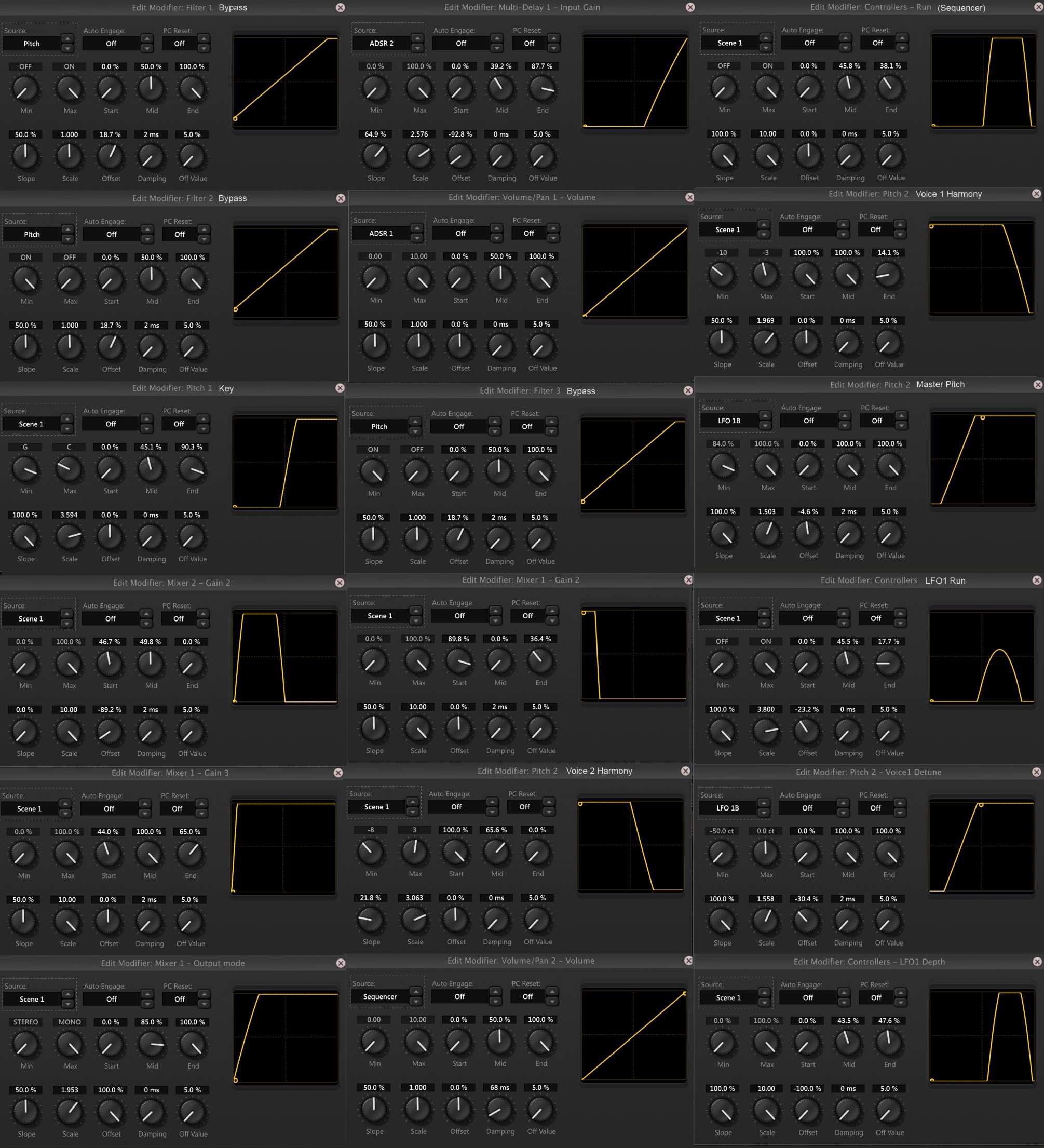11. Sysex parameter increment/decrement etc.
Unlike dragging a control or typing a value in Axe-Edit, putting focus on a parameter then using arrow keys or ctrl + arrow sends "adjust parameter" messages with no value specified. One byte determines the action and can also put a parameter at minimum, or the default you'd get if double-clicking in AE. Usually ctrl+up/down equals one value wheel click on the hardware, and up/down is a larger step. These seem to work for any parameter including block type, even though AE might not always use them.
So with switches sending these commands, you could do things like create ±1 dB switches for any block, or step through items in a list like amp type, cab #, pitch interval/key.
Sometimes the step size might not be very useful in performance. A better approach would probably be to set up switches as up/down for a Manual ABCD knob, then assign that as a modifier source. Then you can also use damping instead of hearing instant jumps. Adjusting scale/slope would let you move through the full modifier range in as few as 7 steps, or up to 100 at defaults. Nothing would stop the ABCD knob from continuing into the dead zone (in 1% steps) if you keep using the switch so watch out for that.
-------------------------
The LAYOUT: MOVE menu actions can also be done via sysex. (Axe-Edit uses the ones for row/column movement but does something else for one-block moves.) A single move block left/right command can swap two adjacent blocks with each press. (Command is specific to grid location, not block.) One use of this might be pre-amp whammy/octave and post-amp harmony at different times from one pitch block. There's no dropout when moving blocks this way, and it seems glitch-free if done while at least one is thru-bypassed (or equivalent with other bypass mode and dry at unity gain).
Unlike dragging a control or typing a value in Axe-Edit, putting focus on a parameter then using arrow keys or ctrl + arrow sends "adjust parameter" messages with no value specified. One byte determines the action and can also put a parameter at minimum, or the default you'd get if double-clicking in AE. Usually ctrl+up/down equals one value wheel click on the hardware, and up/down is a larger step. These seem to work for any parameter including block type, even though AE might not always use them.
So with switches sending these commands, you could do things like create ±1 dB switches for any block, or step through items in a list like amp type, cab #, pitch interval/key.
Sometimes the step size might not be very useful in performance. A better approach would probably be to set up switches as up/down for a Manual ABCD knob, then assign that as a modifier source. Then you can also use damping instead of hearing instant jumps. Adjusting scale/slope would let you move through the full modifier range in as few as 7 steps, or up to 100 at defaults. Nothing would stop the ABCD knob from continuing into the dead zone (in 1% steps) if you keep using the switch so watch out for that.
-------------------------
The LAYOUT: MOVE menu actions can also be done via sysex. (Axe-Edit uses the ones for row/column movement but does something else for one-block moves.) A single move block left/right command can swap two adjacent blocks with each press. (Command is specific to grid location, not block.) One use of this might be pre-amp whammy/octave and post-amp harmony at different times from one pitch block. There's no dropout when moving blocks this way, and it seems glitch-free if done while at least one is thru-bypassed (or equivalent with other bypass mode and dry at unity gain).

